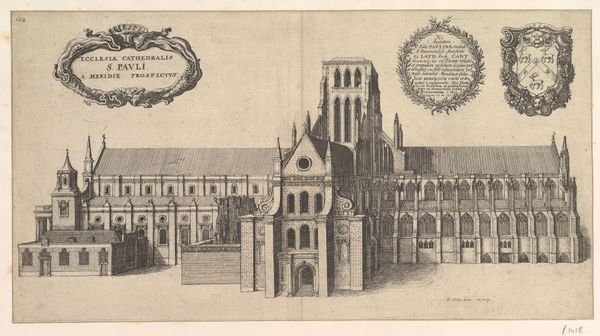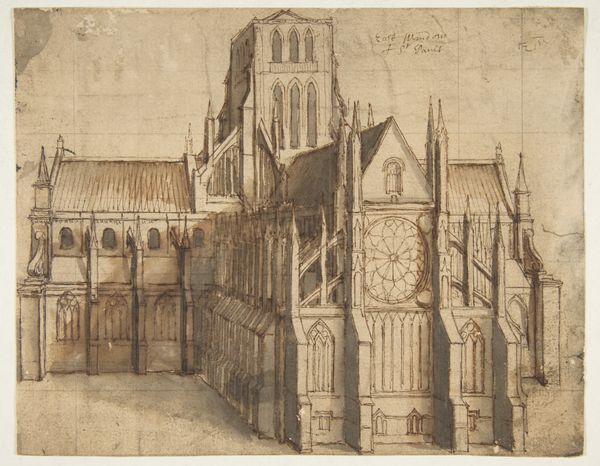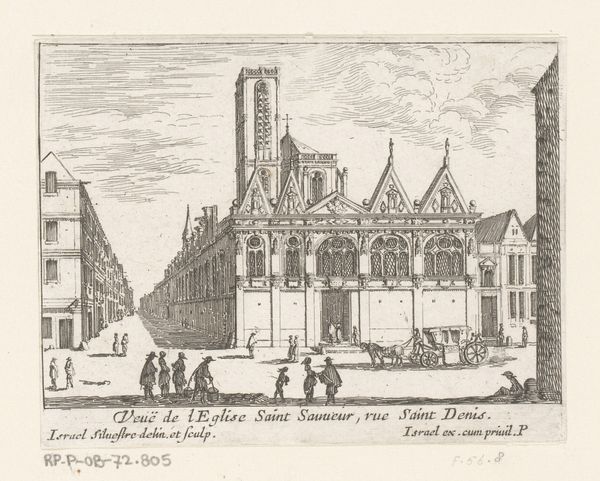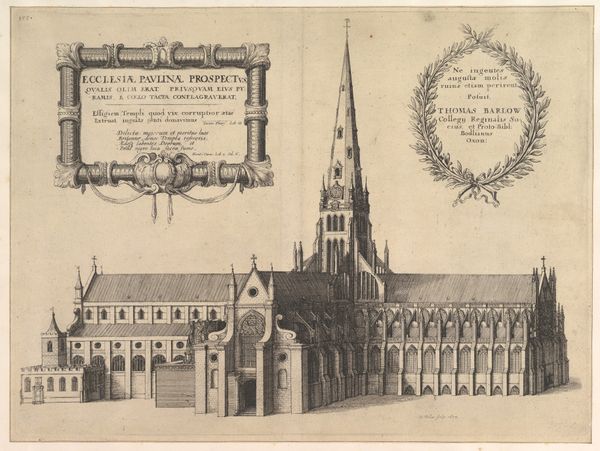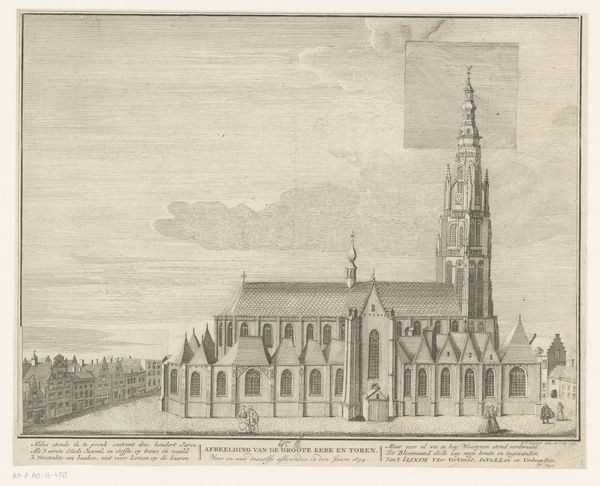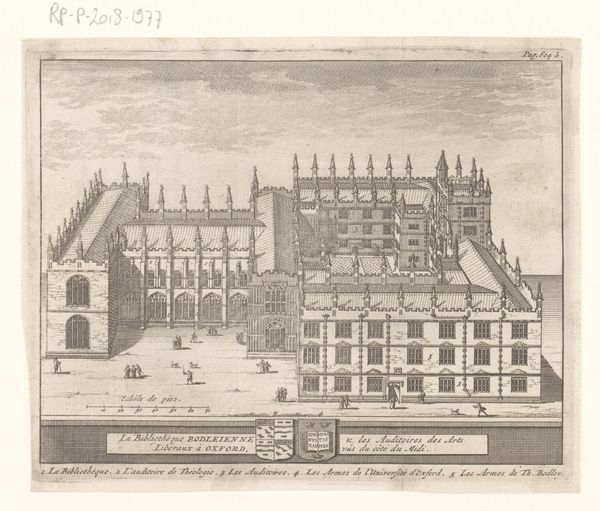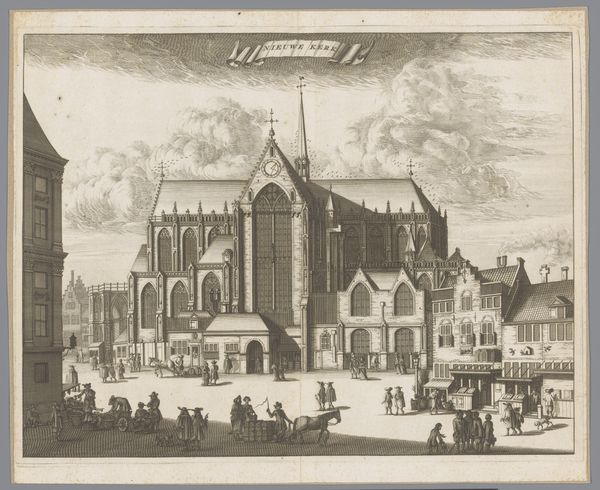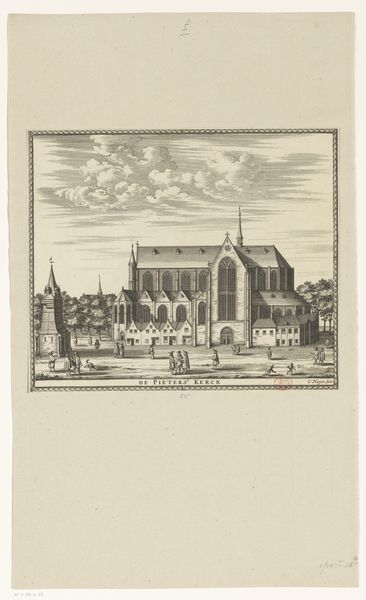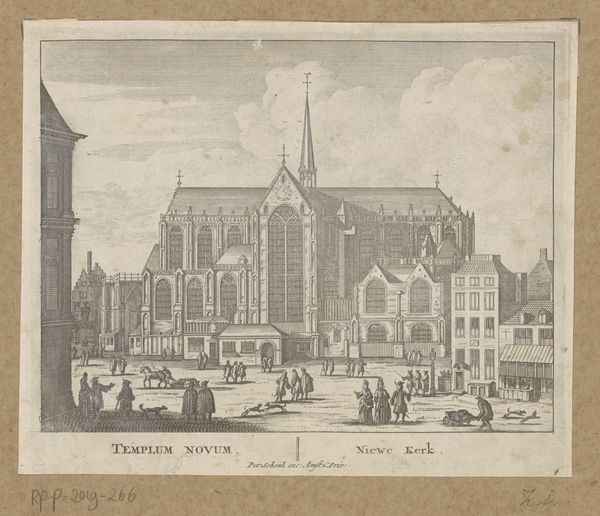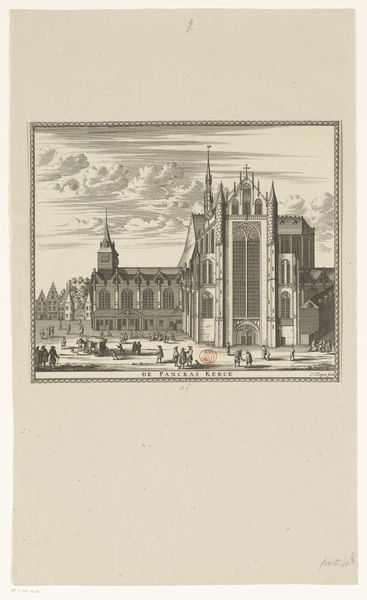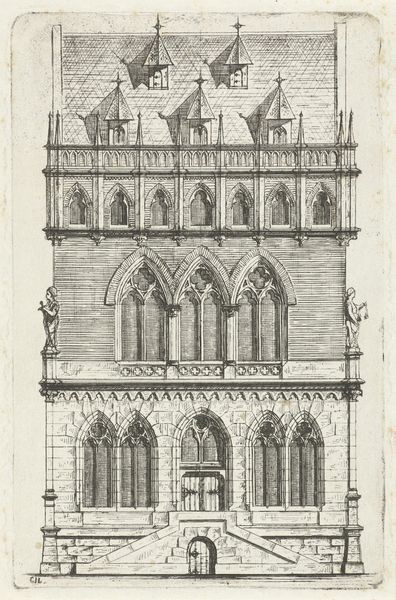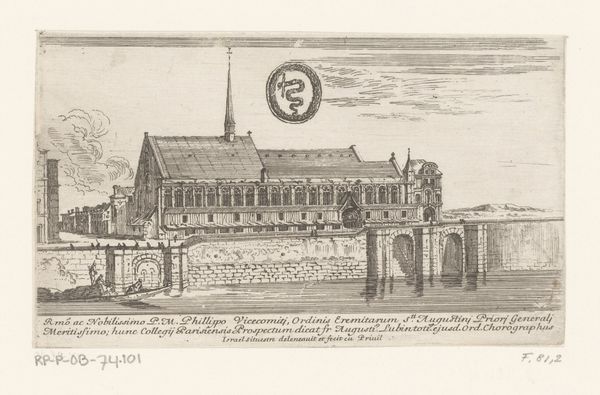
drawing, print, etching, paper, architecture
#
drawing
#
baroque
# print
#
etching
#
paper
#
cityscape
#
architecture
Dimensions: 264 × 349 mm
Copyright: Public Domain
Curator: This etching presents Old Saint Paul's Cathedral from the North, as envisioned by Wenceslaus Hollar in 1656. It's a remarkable rendering of a lost landmark. Editor: My immediate thought is just how painstakingly detailed it is, like an architectural blueprint combined with an atmospheric sketch. Curator: Hollar, of course, was known for that meticulous approach. Consider what an act of preservation this print truly is; we are witnessing the Baroque aesthetic through his skilled hand at capturing the cathedral's structural essence before the Great Fire. Editor: Yes, but beyond its value as a historical record, the etching itself is fascinating. Look at the crispness of the lines, the tonal variation achieved purely through the etching process… paper and ink serving as witness to labor. Curator: Indeed, the image itself bears layered symbolic weight. The very act of creating prints made knowledge and, by extension, cultural heritage accessible. Reproductions of Saint Paul’s undoubtedly fueled collective identity. It’s like holding a memory in one's hand. Editor: And the practical side of me is interested in who exactly owned and traded these prints? What level of society had the means to possess them and for what uses? Decorative? Educational? Was Hollar paid well for his labor and to what purpose would the patrons utilize the drawing? Curator: Perhaps both, simultaneously. The visual language of Baroque architecture signified power, while possessing these prints, these portable testaments to grandeur, further established one’s own position within society. Editor: Right, which in turn would reinforce that structure of labor involved with making this art in the first place. Curator: Seeing how Hollar presented St Paul's, knowing it perished in flame just a decade later, makes me feel deeply conscious of time's passage. It’s not just a building, but a marker of history. Editor: A fascinating intersection, isn't it? Material culture giving shape to ephemeral notions. I find it interesting to ponder how each act of artistic representation feeds the machinery that upholds material and societal structures.
Comments
No comments
Be the first to comment and join the conversation on the ultimate creative platform.
